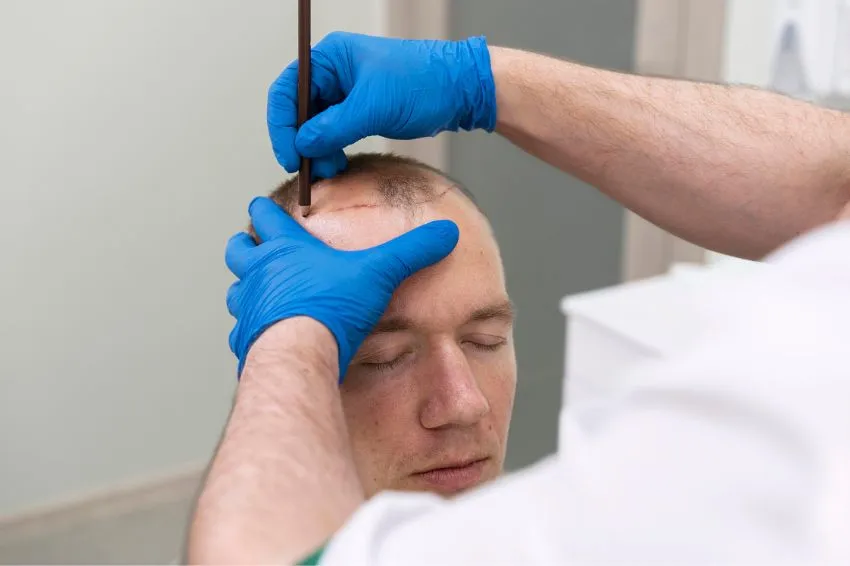Embarking on the journey of a hair transplant can be a life-changing decision, promising a fuller, more confident you. However, like any surgical procedure, it’s crucial to be aware of the potential side effects that may follow. In this comprehensive guide, we’ll shed light on what you can expect post-hair transplant surgery, ensuring you’re well-prepared for the transformative process ahead.
Common Post-Hair Transplant Side Effects:
Swelling and Bruising:
It’s not uncommon to experience some swelling and bruising around the forehead and eyes after a hair transplant. This is a natural response to the surgical process and typically subsides within a few days.
Pain and Discomfort:
Mild pain or discomfort in the donor and recipient areas is normal. Your surgeon will prescribe pain medications to manage any postoperative pain effectively.
Scab Formation:
Small scabs or crusts may form around the transplanted hair follicles. These scabs are part of the healing process and will naturally fall off within a week or two. It’s essential to follow your surgeon’s instructions on how to care for the transplanted area during this period.
Itching:
As the transplanted hair follicles heal, itching may occur. It’s crucial to resist the temptation to scratch the area, as this could disrupt the healing process.
Shock Loss:
It’s not uncommon for some of the existing, non-transplanted hair to shed in the weeks following surgery. This phenomenon, known as shock loss, is temporary, and new hair growth will emerge in its place over the coming months.
Numbness or Tingling:
Temporary numbness or tingling in the donor and recipient areas is possible due to nerve involvement during the surgery. This typically resolves on its own as the healing progresses.
Managing Post-Transplant Side Effects:
Follow Aftercare Instructions:
Adhering to your surgeon’s aftercare instructions is crucial for a smooth recovery. This includes proper cleaning, avoiding strenuous activities, and refraining from certain hair care products.
Regular Follow-Up Visits:
Attend scheduled follow-up visits with your surgeon to monitor progress and address any concerns promptly. These appointments are essential for ensuring the success of your hair transplant.
Patience is Key:
Hair transplant results take time to manifest. Be patient and realistic about the timeline for seeing the full benefits of the procedure.
Conclusion:
Understanding the potential side effects post-hair transplant surgery is a vital step in your journey towards a rejuvenated appearance. With proper care, adherence to aftercare instructions, and patience, you can navigate the recovery process with confidence, welcoming a head of hair that enhances your natural beauty.


